The Story of the Malakand Field Force by Winston S. Churchill (guided reading books txt) 📕
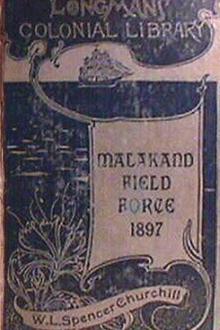
- Author: Winston S. Churchill
- Performer: -
Book online «The Story of the Malakand Field Force by Winston S. Churchill (guided reading books txt) 📕». Author Winston S. Churchill
At 11.30, in the heat of the day the tribesmen attacked again. They surrounded the north and east sides of the fort, and made strenuous efforts to get in. They suffered heavy losses from the musketry of the defence, and their dead lay scattered thickly on the approaches. Nor were they removed till nightfall. Many Ghazis, mad with fanaticism, pressed on carrying standards, heedless of the fire, until they fell riddled with bullets under the very walls.
To communicate with the Malakand was now almost impossible. To heliograph, it was necessary that the operator should be exposed to a terrible fire. In the evening the signal tower was surrounded by men in stone sungars, who kept up an incessant fusillade, and made all exposure, even for an instant, perilous.
At midday, after the repulse of the main attack, the guard of the signal tower was reinforced by six men, and food and water were also sent up.
This difficult operation was protected by the fire of both the Maxims, and of all the garrison who could be spared from other points. Until the 1st of August, water was sent up daily to the signal tower in this way.
The distance was long and the road steep. The enemy’s fire was persistent. Looking at the ground it seems wonderful that supplies could have been got through at all.
As night approached, the defenders prepared to meet a fresh attack.
Lieutenant Wheatley, observing the points behind which the enemy usually assembled, trained the fort Maxim and the 9-pounder gun on them, while daylight lasted. At 11 P.M. the tribesmen advanced with shouts, yells and the beating of drums. The gun and the Maxims were fired, and it is said that no fewer than seventy men perished by the single discharge. At any rate the assault was delayed for an hour and a half. All day long the garrison had remained at their posts. It was hoped they would now get a little rest. But at 1 o’clock the attack was renewed on the northeast corner. Again the enemy brought up scaling ladders and charged with desperate ferocity. They were shot down.
Meanwhile every spare moment was devoted to improving the cover of the garrison. Captain Baker applied himself to this task, and used every expedient. Logs, sand bags, stones, boxes filled with earth were piled upon the walls. It is due to these precautions that the loss of life was no larger.
Continuous firing occupied the 28th, and at 5.30 P.M. the enemy again assaulted. As in previous attacks, they at first advanced by twos and threes, making little dashes over the open ground, for bits of natural cover, and for the stone sungars they had built all round the fort under cover of darkness. Some of these were within 200 yards of the wall. As they advanced the fire became intense. Then the main rush was delivered.
In a great semi-circle round the face of the fort held by the cavalry, and displaying nearly 200 standards whose gay colours were representative of every tribe on the border, they charged right up to the walls. Some of them actually got across the tangled barbed wire and were destroyed in the enclosure. But all efforts were defeated by the garrison, and towards morning the attack melted away, and only the usual sharpshooters remained. Some of these displayed a singular recklessness.
One man climbed up into the barbed wire and fired three shots at the defenders at close quarters before he was killed.
Thursday morning dawned on similar scenes. The garrison employed such intervals as occurred in strengthening their defences and improving their cover, particularly in the approaches to the Maxim and field gun platforms. At 3 P.M. the enemy came out of Chakdara village, and, carrying ladders to scale the walls, and bundles of grass to throw on the barbed wire, made a formidable effort. They directed the attack mainly against the signal station. This building is a strong, square, stone tower. Its entrance is above six feet from the ground. All around the top runs a machiconlis gallery, a kind of narrow balcony, with holes in the floor to fire through. It is well provided with loopholes. At 4
o’clock it was closely assailed. The garrison of the fort aided the tower guard by their fire. So bold were the enemy in their efforts, that they rushed in under the musketry of the defence, and lighted a great heap of grass about three yards from the doorway. The flames sprang up.
A howl of ferocious delight arose. But the tribesmen relapsed into silence, when they saw that no real harm was done. At sunset the fore sight of the fort Maxim was shot away, and the defenders were temporarily deprived of the service of that powerful weapon. They soon managed, however, to rig up a makeshift, which answered all practical purposes. At 8 P.M. the enemy wearied of the struggle, and the firing died away to desultory skirmishing. They toiled all night carrying away their dead, but next morning over fifty bodies were still lying around the signal tower. Their losses had been enormous.
The morning of the 30th brought no cessation of the fighting, but the enemy, disheartened by their losses of the previous night, did not attack until 7 P.M. At that hour they advanced and made a fresh effort.
They were again repulsed. Perhaps the reader is tired of the long recital of the monotonous succession of assaults and repulses. What must the garrison have been by the reality? Until this day—when they snatched a few hours’ sleep—they had been continually fighting and watching for ninety-six hours. Like men in a leaking ship, who toil at the pumps ceaselessly and find their fatigues increasing and the ship sinking hour by hour, they cast anxious, weary eyes in the direction whence help might be expected. But none came. And there are worse deaths than by drowning.
Men fell asleep at the loopholes and at the service of the field gun.
Even during the progress of the attacks, insulted nature asserted itself, and the soldiers drifted away from the roar of the musketry, and the savage figures of the enemy, to the peaceful unconsciousness of utter exhaustion. The officers, haggard but tireless, aroused them frequently.
At other times the brave Sepoys would despair. The fort was ringed with the enemy. The Malakand, too, was assailed. Perhaps it was the same elsewhere. The whole British Raj seemed passing away in a single cataclysm. The officers encouraged them. The Government of the Queen-Empress would never desert them. If they could hold out, they would be relieved. If not, they would be avenged. Trust in the young white men who led them, and perhaps some dim half-idolatrous faith in a mysterious Sovereign across the seas, whose soldiers they were, and who would surely protect them, restored their fainting strength. The fighting continued.
During the whole time of the siege the difficulty of maintaining signalling communication with the Malakand was extreme. But for the heroism of the signallers, it would have been insuperable. One man in particular, Sepoy Prem Singh, used every day at the risk of his life to come out through a porthole of the tower, establish his heliograph, and, under a terrible fire from short range, flash urgent messages to the main force. The extreme danger, the delicacy of the operation of obtaining connection with a helio, the time consumed, the composure required, these things combined to make the action as brave as any which these or other pages record. [A proposal has recently been made, to give the Victoria Cross to native soldiers who shall deserve it. It would seem that the value of such a decoration must be enhanced by making it open to all British subjects. The keener the competition, the greater the honor of success. In sport, in courage, and in the sight of heaven, all men meet on equal terms.] Early on Saturday morning a supply of water was sent to the guard of the signal tower. It was the last they got until 4.30 on Monday afternoon.
When the attack on the fort began, the enemy numbered perhaps 1500 men.
Since then they had been increasing every day, until on the 1st and 2nd, they are estimated to have been between 12,000 and 14,000 strong.
Matters now began to assume a still graver aspect. At 5 o’clock on the evening of the 31st a renewed attack was made in tremendous force on the east side of the fort. But it was beaten back with great loss by the Maxims and the field gun. All night long the firing continued, and Sunday morning displayed the enemy in far larger numbers than hitherto.
They now captured the Civil Hospital, a detached building, the walls of which they loopholed, and from which they maintained a galling fire.
They also occupied the ridge, leading to the signal tower, thus cutting off all communication with its guard. No water reached those unfortunate men that day. The weather was intensely hot. The fire from the ridge made all interior communication difficult and dangerous. The enemy appeared armed to a great extent with Martini-Henry rifles and Sniders, and their musketry was most harassing. The party in the tower kept sending by signal pressing requests for water, which could not be supplied. The situation became critical. I quote the simple words of Lieutenant Rattray’s official report:—
“Matters now looked so serious that we decided to send an urgent appeal for help, but owing to the difficulty and danger of signalling we could not send a long message, and made it as short as possible, merely sending the two words, ‘Help us.’”
Still the garrison displayed a determined aspect, and though the tribesmen occupied the ridge, the Civil Hospital and an adjoining nullah, none set foot within the defences.
At length the last day of the struggle came. At daybreak the enemy in tremendous numbers came on to the assault, as if resolute to take the place at any cost. They carried scaling ladders and bundles of grass.
The firing became intense. In spite of the cover of the garrison several men were killed and wounded by the hail of bullets which was directed against the fort, and which splashed and scarred the walls in every direction.
Then suddenly, as matters were approaching a crises, the cavalry of the relieving column appeared over the Amandara ridge. The strong horsemen mercilessly pursued and cut down all who opposed them. When they reached the Bridgehead on the side of the river remote from the fort, the enemy began to turn and run. The garrison had held out stubbornly and desperately throughout the siege. Now that relief was at hand, Lieutenant Rattray flung open the gate, and followed by half a dozen men charged the Civil Hospital. Captain Baker and Lieutenant Wheatley followed with a few more. The hospital was recaptured. The enemy occupying it, some thirty in number, were bayoneted. It was a finish in style. Returning, the sallying party found the cavalry—the 11th Bengal Lancers—checked by a sungar full of tribesmen. This they charged in flank, killing most of its occupants, and driving the rest after their comrades in rout and ruin. The last man to leave the sungar shot Lieutenant Rattray in the neck, but that officer, as distinguished for physical prowess as for military conduct, cut him down. This ended the fighting. It is not possible to think of a more fitting conclusion.
The casualties in the siege were as follows:—
Killed Wounded 11th B.L… … 1 1
45th Sikhs … . . 4 10
Dir Levies

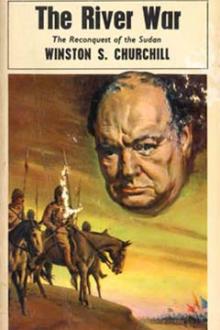
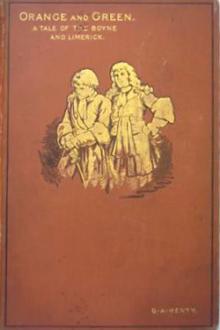
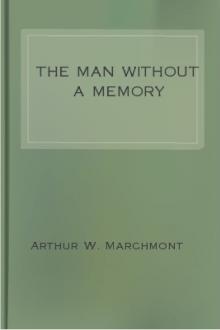
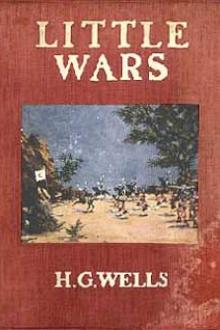
Comments (0)